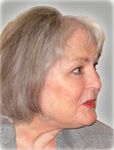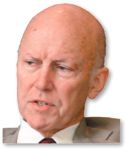Article
Role of AUA education office expanding, evolving
Urology education and training are undergoing sweeping changes at the postgraduate level.
Urology education and training are undergoing sweeping changes at the postgraduate level. At the same time, the practice of urology itself is changing dramatically, with heightened emphasis on minimally invasive and office-based procedures. In this interview, Alice Henderson, MSEd, AUA’s director of education, and Joseph Segura, MD, chair of AUA’s Education Strategic Planning Task Force, discuss how AUA’s Office of Education is meeting the challenge of these ongoing developments. They were interviewed by UT Editorial Consultant Philip M. Hanno, MD, of the department of urology, University of Pennsylvania, Philadelphia.
Q. Please comment on recent changes at the AUA Office of Education, including the move from Houston to the new AUA headquarters in Baltimore.
Ms. Henderson: AUA has always had a very strong strategic direction in education beginning with the vision of Dr. Russell Scott, Jr, and continued by Drs. Eugene Carlton, Jr, and Joseph Corriere, Jr, as Office of Education directors. When the Office of Education moved to the Baltimore headquarters, many of the functions that may have been handled by a single staff person in our former office were assimilated by staff in several different departments in Baltimore, such as marketing, registration, graphic design, and accounting. The Houston Office of Education staff used to work with a committee to plan an activity. In the AUA headquarters, the planning process and its implementation are often divided among various departments. This is a more corporate model than we had in Houston. Consequently, the Office of Education staff, comprised once of 23 individuals, is now nine, with one part-time employee in Baltimore.
Q. An AUA education needs assessment was sent to urologists last year. What were the major positive findings of the survey concerning the services provided by the Office of Education?

Q. What were some of the perceived weaknesses found in that survey?
Ms. Henderson: Two perceived weaknesses were Internet education and more regional offerings in hands-on education. Both take planning and are being developed in coordination with the Internet advisory committee, with Dr. Julian Wan; the audiovisual committee, with Dr. Ann Gormley; and the laparoscopy committee, with Dr. Ralph Clayman. We in education need a stronger understanding of the needs of the clinical practitioner. We need to know where they are spending their time professionally and the areas of urology in which they perceive that they need help. Filling that perceived gap is our mission.
Q. I noticed that there weren't too many primary clinical urologists at the strategic planning session held in Baltimore by the Office of Education. Is there a plan to change that in the future?

Q. There is a huge group of urologists who never trained in their residencies for surgical techniques that are state of the art today. It seems most procedures will continue to evolve and urologists will have to learn as they go. How is the Office of Education responding to this?





